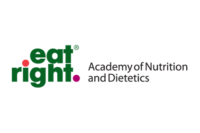Academy of Nutrition on Nutrition Panel Change
Changes announced to the Nutrition Facts label represent a significant step forward, says the Academy of Nutrition and Dietetics.

"Today is a big win for consumers," said registered dietitian nutritionist and Academy president Dr. Glenna McCollum. "The changes announced today are long overdue. There has been so much new research about consumers' use of food labels, chronic diseases like obesity, diabetes and cardiovascular disease and how specific nutrients affect our health."
"Meanwhile, the Nutrition Facts Panel is more than 20 years old and does not reflect the current food environment or recent scientific research. Consumers want information they can use to make healthful choices. And new research on consumers' use of the label, eating patterns, nutrition science and chronic diseases needs to be reflected on the label," McCollum said. "It was time for a change, and today, the FDA is making progress in the right direction."
The FDA's announcement comes nearly 20 years after the nutrition facts panel was first introduced. Since the FDA indicated it would be making revisions, the Academy has been actively encouraging the agency to update the label to reflect the best science about the current food and disease environment. The most significant modifications to the label reflect the Academy's evidence-based recommendations for promoting healthful eating, and align with its Food Labeling Principles, McCollum said.
"The new changes are based on science, and they take people's actual eating behavior into account. Serving sizes for many products have been updated to realistically reflect the amounts people actually eat at one sitting, nutrient comparisons between 'per serving' and 'per container' are available, and a new requirement will tell consumers how much sugar is being added to a product," McCollum said.
"In general, the new panel connects the expert recommendations of the Dietary Guidelines for Americans to real life. With the new panel, consumers will be able to determine if a particular product in the grocery store meets the Dietary Guidelines," McCollum said.
"But there is more work to be done. Despite the improvements announced, many Americans are not familiar with how to use the information on the existing Nutrition Facts panel. To make these changes fully meaningful for consumers, the Academy recommends implementing a sustained, adequately funded nutrition education initiative empowering consumers to use the new label to make informed decisions to eat healthfully," McCollum said.
Examples include helping people learn how to read and understand concepts like "percent daily value" or "added sugars," she said.
"The Nutrition Facts panel is only one source of information, which is why sustained support for educational programs and individual counseling by registered dietitian nutritionists is essential," McCollum said. "Registered dietitian nutritionists are the most qualified health professionals to provide the nutrition education people need, and to help them choose healthy foods to improve their health. RDNs are ready to help consumers use the new label as a tool to make healthier choices in the store, at home and when eating out."
The Academy will continue to work with the FDA on future initiatives, including the possibility of Front of Package labeling and the sorts of health claims and structure or function claims that can be made about foods.
"At its core, the label must be truthful and not misleading. Content on the label should help consumers make informed decisions to build a healthy diet. We must continue to work on making all labels clear and understandable to consumers to improve the nation's health," McCollum said.
Looking for a reprint of this article?
From high-res PDFs to custom plaques, order your copy today!








